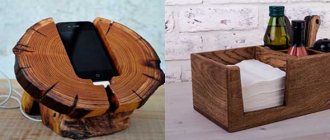When it’s hot summer outside, and a picnic is planned for the weekend, the issue of keeping food fresh and drinks cool becomes acute. An excellent solution would be a thermal bag filled with refrigerants that will increase its functionality. If you don’t have a device manufactured industrially at home, you can easily create a cold accumulator with your own hands - it will easily keep salads fresh, cool drinks and prevent ice cream from melting. Also, with the help of homemade refrigerant, you can significantly save your family budget. The main rule when making it is to do everything according to the instructions.
Cold storage
Civilization develops best in the cold. It is unknown why, but this is how it happened historically. The southern hemisphere cannot boast of highly developed and technological countries, for the most part.
The northern regions, in this regard, are ahead of their neighbors, because in colder conditions:
- It's harder to survive;
- It is more difficult to get at least some harvest;
- Those who are not ready to work up a sweat cannot hope to succeed;
- You have to make plans for the years ahead if you want to live this time successfully.
Some relaxation associated with abundant harvests in the southern regions leads to a slowdown in the process of state building. People simply don’t need to unite into communities; they will survive anyway. But regardless of living conditions, they haven’t come up with anything better than cold to preserve their food:
- Low temperatures “preserve” food;
- With this storage, food does not lose its taste;
- This is a cheap and accessible method today;
- Food can be taken out of the refrigerator and cooked immediately, without any additional procedures or manipulations.
How does a cold accumulator work?
First, you need to understand what principles underlie the operation of the device and what it is.
In terms of device, everything is not so complicated:
- A container that serves as a container for liquid;
- The liquid itself, consisting of water and additives
; - Dye.
Let's go from the end. The dye performs a purely aesthetic function
, without it everything will work exactly the same, just look different. Like a vessel with a transparent liquid. Like a water bottle. In this case, it will no longer be possible to sell a cold storage battery at exorbitant prices, because everyone will understand that it can be made at home for mere pennies.
Any plastic container, such as a soda or mineral water bottle, can serve as a container. Two substances are used as filler. The first of these is water, to create volume and as a convenient solvent.
The second component could be:
- Carboxymethylcellulose;
- Salt;
- Glycerol;
- Isopropyl alcohol.
The task of this “additive” is always the same - to increase the heat capacity of water
. This means that now the liquid will freeze at temperatures significantly below 0° C, and will take longer to melt, bathing everything around with “frosty freshness.” Exactly what you need to maintain the freshness of your products.
DIY cold storage
When considering only cooling options, these devices can be made with your own hands. The simplest homemade product is a plastic bottle - it is filled with clean water and placed in the freezer for 2-3 hours. Such a battery is enough to transport food to the dacha, but the efficiency can be increased by changing the filler (refrigerant).
It is impossible to make a high-quality heat exchanger according to the intended parameters at home, since during manufacturing it is necessary to carry out complex calculations and take into account the physics of transient processes. For household use, simple recipes based on salt and other water thickeners, for example, wallpaper glue, may be sufficient. They will change little the characteristics of the water base, but will increase the shelf life of the products.
Table salt (sodium chloride)
To get the simplest version of the mixture, add 400 g of table salt to 1 liter of water. In order for sodium chloride to dissolve better, the liquid must be heated. The resulting solution is poured into plastic containers - bottles, durable bags, juice packs. Before use, you simply need to freeze the container. This type of cold accumulator will allow you to store food in a thermally insulated box for 12-14 hours at a temperature of about -20˚C.
Defrosting the refrigerator is rightfully considered one of the most troublesome kitchen tasks. Until all the ice melts, it will pass...
Glauber's salt
To ensure a temperature regime of about -10˚C, a composition is prepared based on Glauber’s salt. The solution can be obtained by mixing 200 g of dry component with 1 liter of water. To thicken the mass further, it is possible to supplement the mixture with wallpaper glue, but no more than 10 g of it is needed. Before use, the salt cold accumulator for the thermal bag is frozen for 5-8 hours.
Wallpaper glue
In addition to salt options, you can use a solution based on wallpaper glue. To prepare, dilute 40 g of dry glue in 1 liter of water. The mixture should have a gel-like structure. To use, it is poured into plastic containers and frozen. The characteristics of this homemade product bring the temperature in a thermally insulated container closer to that of a household refrigerator - it stays at 0˚C for 12-13 hours.
The adhesive solution in batteries can be replaced with paste or starch solution - the differences in performance will be insignificant.
Cooler bag for train travel with or without battery
Usually, along with a good thermal bag, cold accumulators are also sold - small containers with saline solution. If the thermal container does not have such a device, cold accumulators can be purchased separately. Batteries do not freeze, but are capable of releasing cold during defrosting. It is with the help of batteries that the food inside the thermal bag remains cooled or frozen longer.
Externally, the cold accumulator is a flat flask. The filling can be liquid or in the form of a gel. It is gel cold accumulators that take longer to heat up, but solution ones are much cheaper.
In principle, the service life of such a battery is unlimited. Before loading food, freeze containers in your home refrigerator. However, if the container with saline solution is cracked, you should immediately say goodbye to such a battery.
A properly selected salt refrigerant container can maintain temperatures 25° below ambient for 18 to 24 hours. Remember, for 1 liter of food you should use 50-60 g of refrigerant in the battery.
New food storage technologies
Why not come up with something revolutionary that can store food much longer and take up less space in the kitchen?
There are several problems here:
- Today, the refrigerator is already an accessible, convenient and cheap option;
- Developing something new will result in a sum with many zeros;
- There is simply no demand for new technology, as long as everyone is satisfied with the existing one;
- Freezing using cold has shown its effectiveness and safety for many centuries; people will treat anything new with distrust.
We, by and large, do not value what we have:
- Cold has virtually no effect on taste;
- The original structure of food is not destroyed;
- There is no additional stress on the body due to this method of storing food;
- It is safe.
Just imagine if you had to treat food with some kind of chemical solutions every time so that it would not spoil longer. And then, each time, wash it all off and hope that nothing remains on the surface or seeps inside.
The best manufacturers of cooler bags
- Tesler is a Russian company registered in 2014. It is developing quite quickly, producing small and large household appliances, selling them in its own retail chains and hypermarkets.
- Arktika is a manufacturer from Russia that produces thermoses, cooler bags and accessories for them, selling products on the markets of the Russian Federation, Asia and the CIS countries.
- Green Glade is another fairly large Russian manufacturer, producing goods for picnics and recreation, offering customers a large selection and constantly updating its range.
- Six Pack is a Russian company that develops and produces food, accessories and electronics for sports. It carefully tests its products and is in great demand among athletes.
- Reisenthel is a trademark registered in 1989, producing exclusively bags for leisure, everyday wear and travel. Popular in Europe and Asia, as well as in the CIS countries.
- Ezetil is a brand from Germany, founded in 1953, that produces refrigeration equipment and has received awards for the development of new freezing technologies produced by leading design engineers from around the world.
- Helios is a subsidiary brand of the large Russian concern Tonar. It produces thermal underwear, winter equipment and small household appliances for travelers, as well as products for fishing.
- AVS is another Russian brand, registered in 2003, that produces auto chemicals and car accessories, is working to expand its product line, and is the winner of the “Automotive Component of the Year” award.
- Mobicool is a mobile cooling device manufacturer based in Hong Kong. The company was registered in 1991, is considered reliable and popular all over the world.
- Airline is a concern created in 2004. The brand is developing rapidly, has many trademarks, and under the name Airline produces accessories for cars and trucks.
Selection and examples of models
Today you can buy a variety of cold storage batteries in online stores. The main parameters to consider when choosing are listed below.
- design;
- filler composition;
- volume.
Almost all cold storage battery fillers are blue in color. But this does not matter and the color does not carry any functional load. It depends on the dye added. Therefore, if you find cold storage batteries with red or other colored filler on sale, you can buy them without any problems. The volume of most models offered on the market today ranges from 250 to 800 milliliters.
Almost all industrial-made cold storage batteries have an unlimited shelf life. Of course, subject to the rules for storing them when not in use. Many manufacturers of such models guarantee the safety of the materials from which they are made, as well as environmental friendliness.
Product Features
A cooler bag is usually a container with carrying handles designed to hold refrigerated foods. It can be made in a fabric case with additional compartments and pockets, sometimes with a shoulder strap in the format of a backpack or plastic box. Using the device involves both positive and negative aspects.
So, when traveling, a cooler bag will allow you to:
- take perishable foods with you;
- have cold drinks on hand;
- protect things from grease and food odors.
But when planning a trip, it is important to consider the disadvantages of portable refrigerators:
- extra weight;
- takes up more space as luggage than a regular bag;
- The time for keeping the cold inside is limited.
However, all these disadvantages can be negated if you choose the right type and model of thermal bag, taking into account the intended conditions of use. If we talk about the principle of operation of the device, everything is simple. To maintain low temperatures in portable thermal bags, use:
- heat-insulating filler;
- cold accumulators;
- active cooling.
Each of the listed solutions is selected by the user depending on the task assigned to him and the specific type of accessory.
An insulated cooler bag works like a regular fur coat or blanket. Its walls are made of a thick layer of foam or other insulating material that protects the cold contents from the warm environment. The lining is usually made of reflective fabric, which also reduces heat loss. This principle of operation of the cooler bag will ensure cold storage for two to seven hours, no more.
A more effective scheme is using cold accumulators (cold cells), when the walls of the device are lined with containers with chilled or frozen liquid. How long a cooler bag keeps cold depends on how quickly the cold elements heat up. Cold accumulators can be used with any thermal bag, even if this is not provided by the manufacturer.
Devices that can not only retain cold, but also produce it, necessarily consume electricity. If the cooler bag uses a car battery as a power source, you need to make sure that it does not run out. To avoid such troubles, some models only operate when the engine is on, so they may defrost during long-term parking.
The most commonly used thermoelectric and compressor portable refrigerators. The first ones use Peltier elements to cool products 15-30 °C below ambient temperature. They may have an LCD display, an audible alarm, even a built-in temperature recorder. This cooler bag weighs 3-5 kg, runs on battery power for several hours, so it is useful not only for motorists.
Heavy and bulky compressor models rarely come in a bag format. They weigh from 10 kg and do not tolerate being turned over, so they are most often used in spacious cars and yachts.
Cold storage
Civilization develops best in the cold. It is unknown why, but this is how it happened historically. The southern hemisphere cannot boast of highly developed and technological countries, for the most part.
The northern regions, in this regard, are ahead of their neighbors, because in colder conditions:
- It's harder to survive;
- It is more difficult to get at least some harvest;
- Those who are not ready to work up a sweat cannot hope to succeed;
- You have to make plans for the years ahead if you want to live this time successfully.
Some relaxation associated with abundant harvests in the southern regions leads to a slowdown in the process of state building. People simply don’t need to unite into communities; they will survive anyway. But regardless of living conditions, they haven’t come up with anything better than cold to preserve their food:
- Low temperatures “preserve” food;
- With this storage, food does not lose its taste;
- This is a cheap and accessible method today;
- Food can be taken out of the refrigerator and cooked immediately, without any additional procedures or manipulations.
Stages of self-production
Many people create cold storage batteries with their own hands. The advantages of this solution are obvious:
- devices are made from improvised materials available in every home - their cost is extremely low;
- manufacturing requires a minimum of time and effort - preparation will take no more than 10-15 minutes, the rest of the time is freezing the homemade refrigerant.
First you need to collect a basic set of raw materials and supplies - 0.5 and 1 liter plastic bottles, table or Glauber's salt, wallpaper glue or gelatin. The manufacturing nuances in each option will be slightly different.
With table salt
You will need: 1 liter of ordinary water, 450 g of table salt, plastic containers of the required volume.
- The components for a strong solution are mixed and slightly heated so that the salt crystals dissolve faster.
- The resulting liquid is poured into a juice container, bottle or durable plastic bag.
- Freeze at minus 18 degrees.
- After 8-10 hours, the finished refrigerant is wrapped in a terry towel to create proper thermal insulation, and a bag is put on top so that the condensation that forms does not fall on the food.
This cold accumulator will keep food at a temperature of -15° for 11-13 hours.
With Glauber's salt
Mirabilite is widely used in refrigeration, so it is perfect for making homemade refrigerant. You will need: 1 liter of water, 200 g of salt itself, 10 g of gelatin or wallpaper glue.
The step-by-step algorithm is not much different from the first option:
- A saline solution is prepared, then it is thickened with gelatin (glue).
- The finished mixture is poured into a bag or bottle and placed in the freezer for 6-9 hours.
- The container is wrapped in terry cloth and placed in a bag that will collect condensation.
In the thermal bag, Glauber's salt coolant maintains a temperature of -10° for about 8-10 hours.
With wallpaper glue
To prepare, you will need a plastic container, 1 liter of water, 40 g of dry wallpaper glue. Step-by-step preparation:
- Combine water and dry mixture and stir well until a gel-like consistency is obtained.
- The solution is poured into a prepared container and frozen in the freezer.
The refrigerant will keep food in the thermal bag for up to 11 hours at temperatures below 0.
The approximate ratio of wallpaper glue and water to create a cold storage device is 4:100.
With gelatin
To create a gelatin refrigerant, prepare 4 liters of water, table salt, 10 g of gelatin, and a plastic container.
- Pour salt into 1 liter of water in a ratio of 10:3 and stir thoroughly. The sodium chloride should be completely dissolved.
- Then dilute the mixture with the remaining 3 liters of water and add gelatin. Stir well again - the liquid should thicken a little.
- The solution is poured into a plastic container and placed in the freezer until completely frozen.
The gel substance melts more slowly than the options described above, so it will keep the cold inside the thermal bag for 8-10 hours.
Homemade coolant from diapers
The refrigerant from baby diapers is strange at first glance, but in fact it is an effective cold accumulator. It will perfectly replace an industrial device and will maintain the desired temperature throughout the day. There is no need to put the diaper directly into the thermal bag to keep it cold; just remove the inner gel-like mixture from it.
To make an unusual coolant for a cooler bag with your own hands, you need to take:
- diaper – 1 piece;
- salt – 2 teaspoons;
- water – 250 ml;
- plastic sealed bag - 1 piece.
Preparation method:
- Pour 2 teaspoons of salt into 250 ml of water and stir until completely dissolved.
- The resulting mixture is gradually poured onto the inside of the diaper, waiting for the water to be absorbed.
- The upper part of the diaper is cut and the gel mass is taken out, which forms immediately after water is absorbed.
- It is sent into a sealed Zip Lock bag and kneaded there for even distribution.
To increase the efficiency of the cold accumulator, it is additionally frozen for several hours.
When making a refrigerant, you can add any food coloring to the water, resulting in not only a useful, but also an aesthetically attractive cold accumulator.
How does a cold accumulator work?
First, you need to understand what principles underlie the operation of the device and what it is.
In terms of device, everything is not so complicated:
- A container that serves as a container for liquid;
- The liquid itself, consisting of water and additives
; - Dye.
Let's go from the end. The dye performs a purely aesthetic function
, without it everything will work exactly the same, just look different. Like a vessel with a transparent liquid. Like a water bottle. In this case, it will no longer be possible to sell a cold storage battery at exorbitant prices, because everyone will understand that it can be made at home for mere pennies.
Any plastic container, such as a soda or mineral water bottle, can serve as a container. Two substances are used as filler. The first of these is water, to create volume and as a convenient solvent.
The second component could be:
- Carboxymethylcellulose;
- Salt;
- Glycerol;
- Isopropyl alcohol.
The task of this “additive” is always the same - to increase the heat capacity of water
. This means that now the liquid will freeze at temperatures significantly below 0° C, and will take longer to melt, bathing everything around with “frosty freshness.” Exactly what you need to maintain the freshness of your products.
How to choose a device
Cold storage tanks differ in design features, type of refrigerant and its volume in a sealed container. These parameters must be taken into account when choosing a refrigeration device. The color of the refrigerant does not in any way affect the characteristics of the battery and does not carry a functional load, unless otherwise specified by the manufacturer on the packaging.
Some factory cold storage batteries can not only be frozen, but also heated. The substance inside the container is capable of keeping food warm. When it is necessary to use a cold accumulator as a heater, it is charged in the microwave. The heating time should not exceed that specified by the manufacturer.
Heating in a microwave oven is only possible in the case of purchased drives, the manufacturer of which allows their use with heating.
Purpose of the cooler bag
For those who still doubt whether this accessory is needed, it is useful to find out where the thermal bag can be used. The purpose of the cooler bag allows you to:
- Place food in it during large purchases at the market. Even a long stay there on a hot summer day will not spoil fresh meat or dairy products.
- Take chilled drinks, ice cream or other products with you when going to the shore of a river or sea.
- Keep cosmetics and medications that require a certain storage regime in it during your trip.
- For trips that take more than 12 hours, store perishable food in it.
- Keep cooked foods or drinks warm while outdoors.
- Take lunch to work or school in 3-4 liter thermal bags.
- Keep food from the freezer compartment in it while the refrigerator defrosts.
- Fishermen and hunters use them to store game or catch.
You can use a thermal bag under various circumstances. Practical housewives never have them idle. And some people prefer to buy several of these products of different sizes at once for all sorts of cases when a cooling or heating effect is needed.
New food storage technologies
Why not come up with something revolutionary that can store food much longer and take up less space in the kitchen?
There are several problems here:
- Today, the refrigerator is already an accessible, convenient and cheap option;
- Developing something new will result in a sum with many zeros;
- There is simply no demand for new technology, as long as everyone is satisfied with the existing one;
- Freezing using cold has shown its effectiveness and safety for many centuries; people will treat anything new with distrust.
We, by and large, do not value what we have:
- Cold has virtually no effect on taste;
- The original structure of food is not destroyed;
- There is no additional stress on the body due to this method of storing food;
- It is safe.
Just imagine if you had to treat food with some kind of chemical solutions every time so that it would not spoil longer. And then, each time, wash it all off and hope that nothing remains on the surface or seeps inside.
Varieties
There are several types of cold batteries: silicone, gel, water-salt. Having understood their differences, you will be able to understand which is more effective and choose the best option for yourself:
- Silicone. This type of cold accumulator maintains a low temperature for the longest time - from 0 to +5 degrees throughout the week. It looks like a rectangular film package. Inside it is a special silicone mixture that freezes quickly and melts slowly.
- Gel. This type of cold storage battery is the most common. It looks like a dense, sealed, rectangular bag. It contains a gel-like substance inside that keeps the inside of the bag cool. It can also be used as a heat accumulator. It supports a wide temperature range and operates for up to 16 hours. If the filler leaks, you don’t have to worry - simply wipe the surface with a napkin or rinse with water. The gel will not spoil the products, it is completely safe and does not harm the body.
- Salt cold accumulator. Appearance: rectangular plastic box. It contains a water-salt solution inside, which can be added if necessary (but not all manufacturers provide this possibility). The battery maintains low temperatures, down to approximately -10°, throughout the day.
Principle of operation
Cold accumulators are a plastic, necessarily sealed, rectangular flat container containing a special liquid inside – usually a solution of carboxymethylcellulose. The weight of one container is approximately 0.5 kg, it is designed for 6-10 liters of thermal bag volume, allowing you to maintain a constant temperature for up to 10 hours. In fact, the device resembles ice, but has special properties - it freezes quickly and melts slowly.
Devices that accumulate cold are multifunctional: they will be useful for tourists, summer residents, and motorists on the road . In addition, they extend the life of a stationary refrigerator, reducing the load on the compressor, and become a real salvation during a power outage when the contents of the freezer begin to melt. Refrigerants are also used in medicine - for the transportation of a number of drugs, vaccines, biological tissues and other things.
The operating principle of such a device is simple: the container is placed in the freezer, where it completely freezes in 6-8 hours. After this, the battery is ready for use - cover the sides and bottom of the thermal bag with the required number of bags, and then tightly load the products into it. The lifespan of the refrigerant is unlimited; after use, it can be rinsed with water, wiped dry and re-frozen.
Batteries should not be placed in regular travel bags - their contents may damage the lining and fabric from the inside.
How to make a cold accumulator?
You can make this “miracle of technology” right in your kitchen:
- Take a half-liter plastic bottle;
- Pour in 400 ml of liquid;
- Add 100 grams of salt;
- Place in the freezer for a day;
- We enjoy the result.
You can measure salt using teaspoons or tablespoons. In the first case - 10, in the second - 3 with a slide. Freezing may take a little longer and you should make sure in advance that your freezer is capable of reducing the temperature to -18° C. Otherwise, there is little point in the experiment.
Immediately after removal from the freezer, the manufactured “device” can be used for its intended purpose.
If you want to make something a little more complicated and a little more effective, you can use other fillers instead of salt:
- Carboxymethylcellulose;
- Glycerol;
- Isopropyl alcohol.
In the public domain you can find tables at what temperature each solution freezes. Of course, it all depends on the mass fraction of the substance; with 100% isopropyl alcohol it is possible to achieve a figure of -73° C. But first make sure that your freezer meets your desires and can freeze the cold accumulator to such values.
Using cold storage tanks
The principle of operation of drives is the same for all types. Before using a portable compact cold generator, a person needs to charge it. To do this, you need to put the device in the freezer for 8 hours - until the refrigerant inside the sealed container freezes. In the case of refrigerators with a no-frost system, the placement of the battery does not matter. When ice freezes in the freezer, it is advisable to place the storage unit closer to it.
For reference! It is recommended to store it in the freezer during periods when the storage device is not needed. The absence of temperature surges allows you to increase the operating period of the device.
Keeping the battery in the freezer for a long time does not affect the performance of the device in any way - sub-zero temperatures do not render the refrigerant or the sealed case unusable. After the element has used up its charge, the drive is thoroughly washed, the case is allowed to dry on its own, and then put back into the freezer.
Benefits of a built-in ice maker
Stationary machines for making ice take up a lot of space, despite the fact that they cannot be called cheap (such devices are more likely aimed at servicing bars, although there are also household “semi-professional” models). A generator built into the refrigerator door will significantly save living space, remain out of sight and will not ruin the family budget. For household needs, its resources are absolutely enough, and considering that this device is implemented only in expensive, functional and truly high-quality refrigerators, the purchase seems very, very profitable.
Let's count the benefits of purchasing a refrigerator with an ice maker:
- This frees up kitchen space - a free-standing unit would take up the lion's share of the space; for built-in models this problem does not exist in principle;
- different forms of ice are available - some devices allow you to arbitrarily select the type of grinding - crushing or forming cubes;
- The device produces the cleanest possible food product - freezing occurs autonomously and without contact, so the ice does not get dirty and does not absorb foreign odors. Many refrigerators support a continuous freezing system, which guarantees the freshest crumbs or cubes;
- Energy is saved - there is no need to look into the freezer once again, which leads to a violation of the temperature regime and increased resource consumption.
Cold storage batteries: which ones are better?
Oddly enough, a self-made cold storage battery can perform much better than store-bought analogues:
- Ezetil
products performed well when cooled during the first 10-15 hours; - Freezpack
batteries perform better over longer distances; - Plain water is also quite suitable, especially if you add a little salt.
Knowing the contents of the container, you can make exactly the same solution, or even with better characteristics. So going to the store and overpaying is pointless. Selling this product in electronics stores also looks a little stupid, considering that the “mechanism” itself contains only plastic, water, dye and a simple additive.
If you want to make the most effective cold storage battery, use isopropyl alcohol:
- It provides a significant increase in the heat capacity of water;
- Most effective for small devices;
- Before use, make sure your freezer is up to the task.
DIY battery
Batteries can be purchased in specialized stores, placed an order on online resources, but you can make it yourself, according to the “cheap and cheerful” principle.
Of course, the key point is the composition of the liquid that is used as a filler for a plastic container. In industrial batteries, the coolant contains: water, an antibacterial additive and carboxymethylcellulose. The latter serves as a thickener and controls the expansion of water when freezing. Considering the above, we offer several recipes for preparing liquid for a homemade cold accumulator.
Recipe No. 1
Manufacturing process:
- in a liter of ordinary drinking water, preferably warm, prepare a saturated solution of table salt, adding about 400 grams of sodium chloride (table salt);
- add three liters of water to the composition and add the required amount of wallpaper glue. The consistency of the liquid should be gel-like;
- pour the solution into plastic containers with a screw cap or plastic bottles;
- place in the freezer and freeze.
Read also: Pancakes with red fish recipe with photos
Such a battery can maintain the temperature in a special bag down to -20 degrees C for a long time.
Recipe No. 2
For a homemade cold accumulator: you need to prepare a 20% solution of Glauber's salt. For 100 grams of solution, you need to use the following ratio of substances: 20 grams of anhydrous salt, 1 gram of CMC (wallpaper glue) and a certain amount of water.
This battery composition is capable of maintaining cold temperatures down to -10 degrees C.
Recipe No. 3
This is the simplest, one might say force majeure, method of making a cold accumulator. It is necessary to mix water and wallpaper glue in the following proportions: 96 grams + 4 grams.
Minus 1 degree Celsius in a bag of groceries can create refrigerator conditions and allow you to hold out for some time.
At home, it is difficult to maintain tightness requirements, so special attention when using homemade cold accumulators must be paid to safety, especially if they are planned to be used for cooling food.
Video about preparing a cold accumulator
Most people don’t even suspect that making a cold storage battery with your own hands is much easier than it might seem at first glance. Behind the clever words lies a simple mechanism of action that can be reproduced even at home, with minimal effort and money.
Types of Cooler Bags
Despite the fact that now you can find countless insulated bags in stores, they are all divided into three large groups:
- regular thermal bags;
- bags with refrigeration batteries;
- car refrigerators.
Regular cooler bag
Regular insulated bag. Able to maintain the set temperature inside for several hours. Unlike the other two options, the thermal bag supports both minus and plus temperatures.
It is made in a very simple way: inside the bag there is a layer of heat-insulating material. As a rule, it is either foil or polyurethane foam.
Such thermal bags can be made in three versions: in the form of a regular portable bag with wide handles, in the form of boxes and in the form of backpacks.
Bag with cold accumulator
This option can retain cold much longer than a simple thermal bag. The effect is achieved due to a thick thermal insulation layer and a cold accumulator, which comes with the bag. This device allows you to keep food fresh for 12 hours.
Choosing a car cooler bag
The car refrigerator operates from a power source. It can be either a regular outlet or a car battery. Due to this, they can remain cold for several days. Ideal for people traveling by car, as they have a larger displacement than the two previous options.
There are three types of car bags:
- Thermoelectric. An excellent option in terms of price-quality ratio. Its only drawback is the slow cooling of food.
- Compressor. They look like smaller versions of a regular refrigerator, and therefore have large sizes and a high price.
- Absorption. The most optimal option for car bags, since they can be powered from a cigarette lighter, socket and liquefied gas. The only drawback is the high price.
What is this invention?
In its simplest form, a cold accumulator is a plastic bottle filled with salted water. It is enough to place it in the freezer for a day, then take it out and put it in your thermal bag so that the food and drinks in there remain at a low temperature for as long as possible.
In this water (filler) you can dissolve:
- Salt;
- Isopropyl alcohol;
- Glycerol;
- Carboxymethylcellulose.
All this will increase the heat capacity of water - it will take longer to freeze and release heat more slowly. Those. will be able to cool longer what needs to be stored at low temperatures.
If you don’t want to overpay, just do everything at home, with your own hands. Anyone can dissolve salt in water, and it’s not difficult to find table salt; just open a cabinet in the kitchen or look at the nearest grocery store.
If you want a “frosty blue” color, just like in the store, add dye.
Cold storage batteries do not always meet the expectations of their owners, and why should there be any surprise? It's just a frozen container of liquid.
Helpful tips for using a cooler bag for train travel
In order to keep the low temperature inside your thermal container as long as possible, you should follow a number of simple recommendations.
- First of all, refrigerate the bag before using it. For example, the bag itself can be placed in the refrigerator or kept inside a frozen water bottle.
- If you use cold storage batteries, they should also be frozen first. This will take you at least 10-12 hours.
- Before storing, cool or freeze the required products.
- Place the food as tightly as possible, make sure there are no voids, and don’t forget to place a couple of cold accumulators in the middle.
- It is better to transport a thermal container among other things, if the situation and the size of the bag itself allows. Large car refrigerators should be transported in the trunk of a car.
- You should open the bag as little as possible - because warm air gets inside and increases the temperature inside the cooler bag. Especially if it’s hot summer outside and you’ve brought food for a long picnic.
As you can see, nothing supernatural, but following these simple rules will allow you to extend the life of your portable thermal bag.











